If you’re new to wine collecting or are a long-term wine connoisseur, adding a wine cellar or custom wine room to your house is a good way to store, display and enjoy your collection. Wine cellars offer a beautiful yet pragmatic way to provide storage for your collection while protecting the value of your investment. And speaking of investment, wine cellars and wine rooms can often improve the value of your home, making it more attractive to future homebuyers.
If you’re considering adding a wine cellar or wine room to your home, you’re likely thinking of a number of design and related topics. What type of wine racking will best suit your home and your lifestyle? What is the best way to incorporate seating and dining areas if you want to entertain in your wine space? And what are the specifics when it comes to storing wine safely? Follow these tips from the Orren Pickell Building Group to build a wine cellar that you and your family will enjoy for years to come.
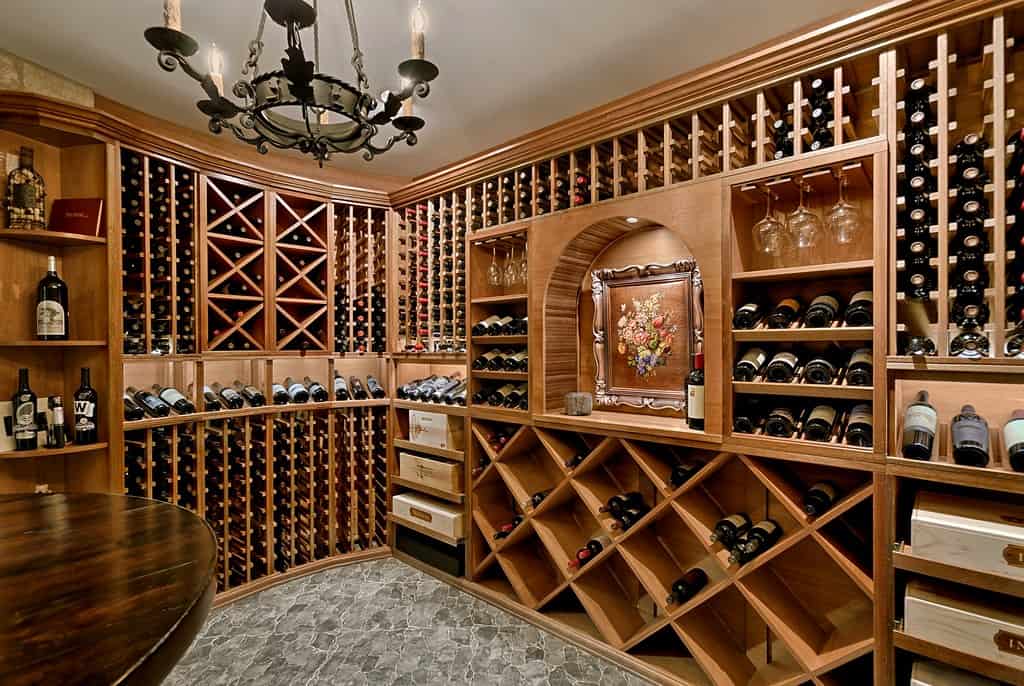
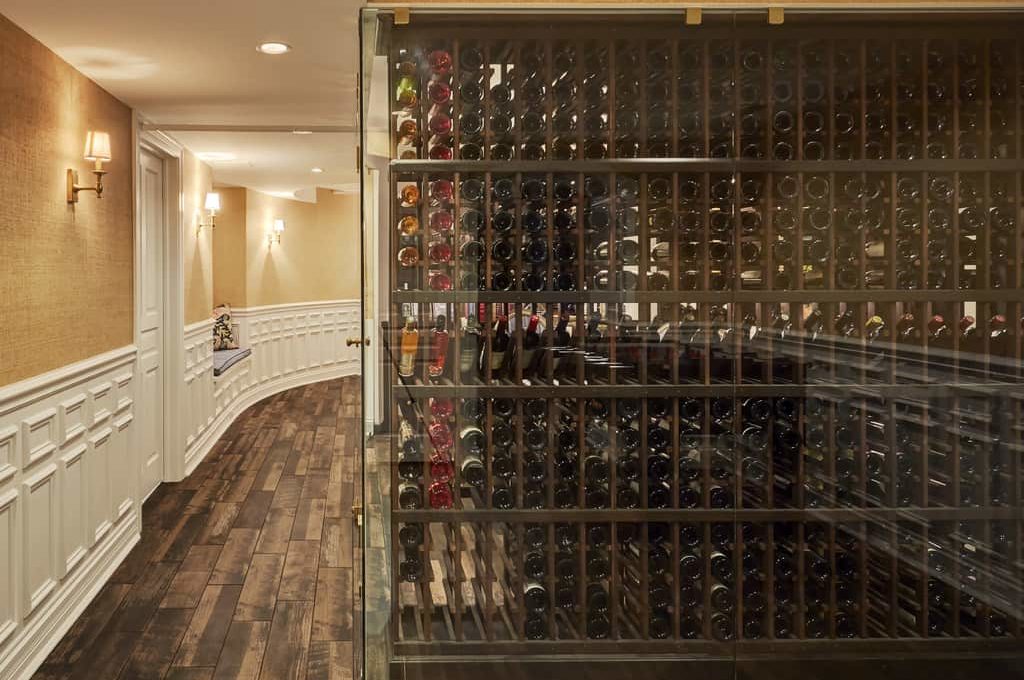
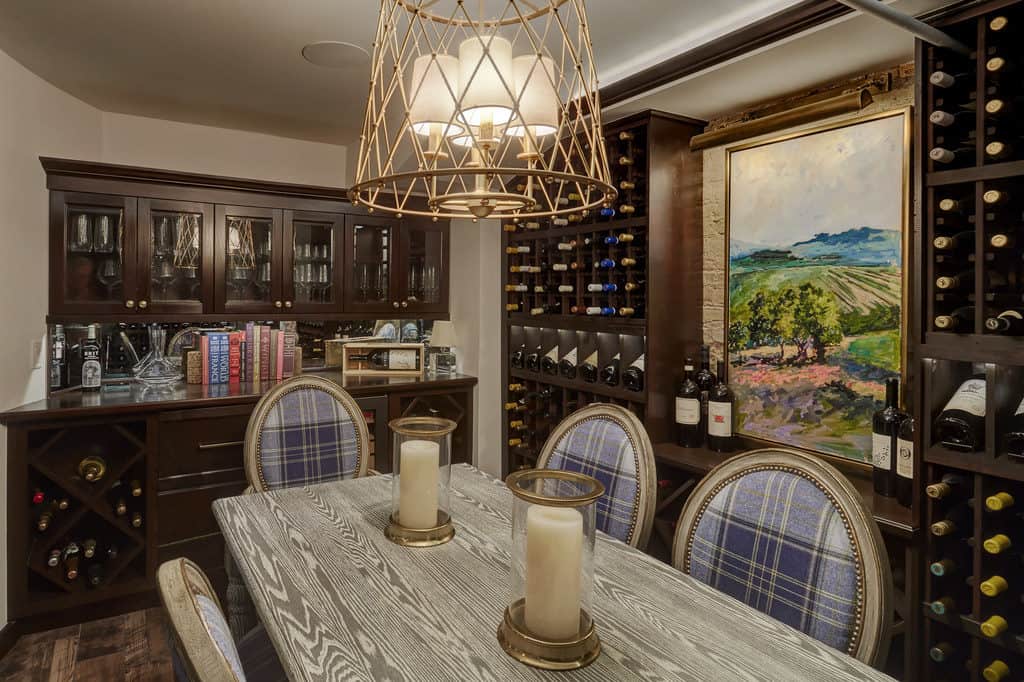
Wine Racking Options for Wine Cellars and Wine Rooms
One of the first decisions you’ll need to make when thinking about the design of your custom wine cellar is the racking that will hold your wine bottles. Typically made out of wood or metal, wine racks are available in a variety of finishes and styles so that you can choose a racking system that is both practical and attractive.
Wood Wine Cellar Racks
Wood racking systems are available in floor-to-ceiling racks, half-height racks and many other configurations. In fact, many of our clients opt to use waterfall or cascading wood wine racks to add visual interest and create different shapes within their wine cellars. We always suggest adding custom crown and base molding to wood-based wine rack systems as a way to make the shelving look more finished and pull everything together.
Most wood wine storage systems are a full 13-inches deep, allowing for full insertion of the bottle. However, it’s easy to add wine cradles and shelves that add a slightly different storage look while safely storing your wine. Rotating wine cradles can make effective use of otherwise awkward corner space, while pull-out wine cradles with sliding bottle shelves can provide extra protection for your most precious wines.
Metal Wine Cellar Racks
Many homeowners opting for a more modern look to their wine cellars opt for metal wine shelving or metal wall-mounted pegs. Many of the metal systems on the market store the wine in a way that shows off the entire bottle and label rather than hiding it within the shelving. Modern, low-profile metal racking styles are available to fit any kind of space, from a tiny wine closet to a large wine cellar with a tasting room. Available as freestanding designs, built-in components or combination of both, metal wine racking tends to look most luxurious when combined with glass walls and accents and smart backlighting.
Whichever wine rack systems you choose, consider adding a small built-in tabletop insert for tasting purposes so that you can enjoy your wine right there in your wine cellar. Additionally, don’t forget to explore the different designs available for you to store, hold and display wine glasses; after all, they’re a big part of the wine drinking experience.
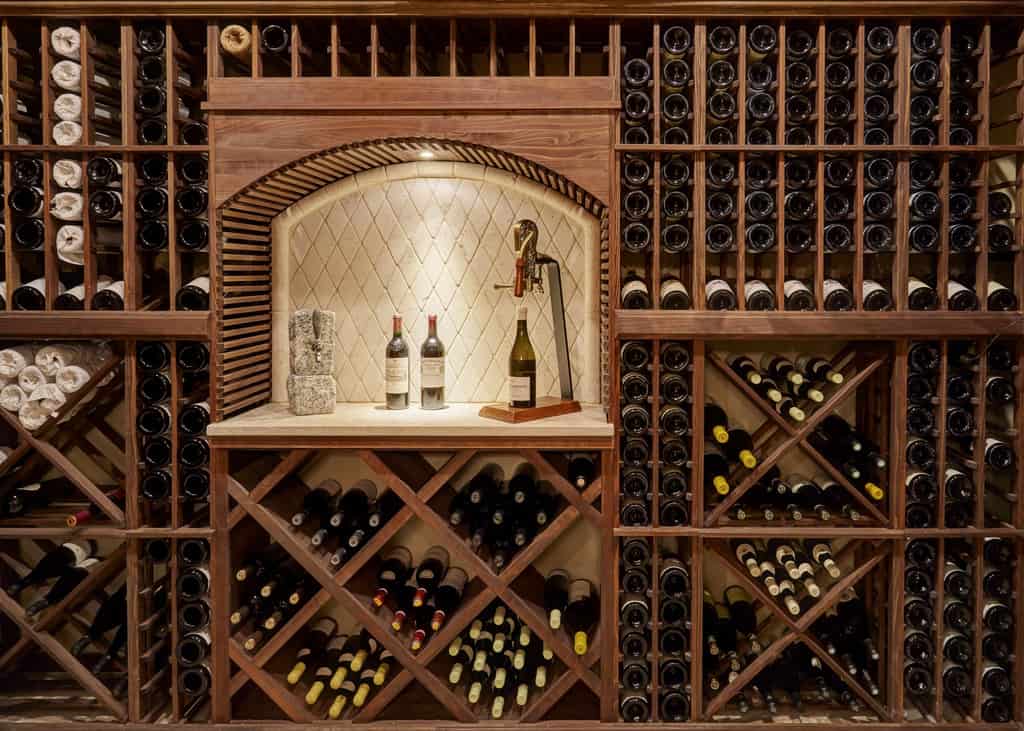
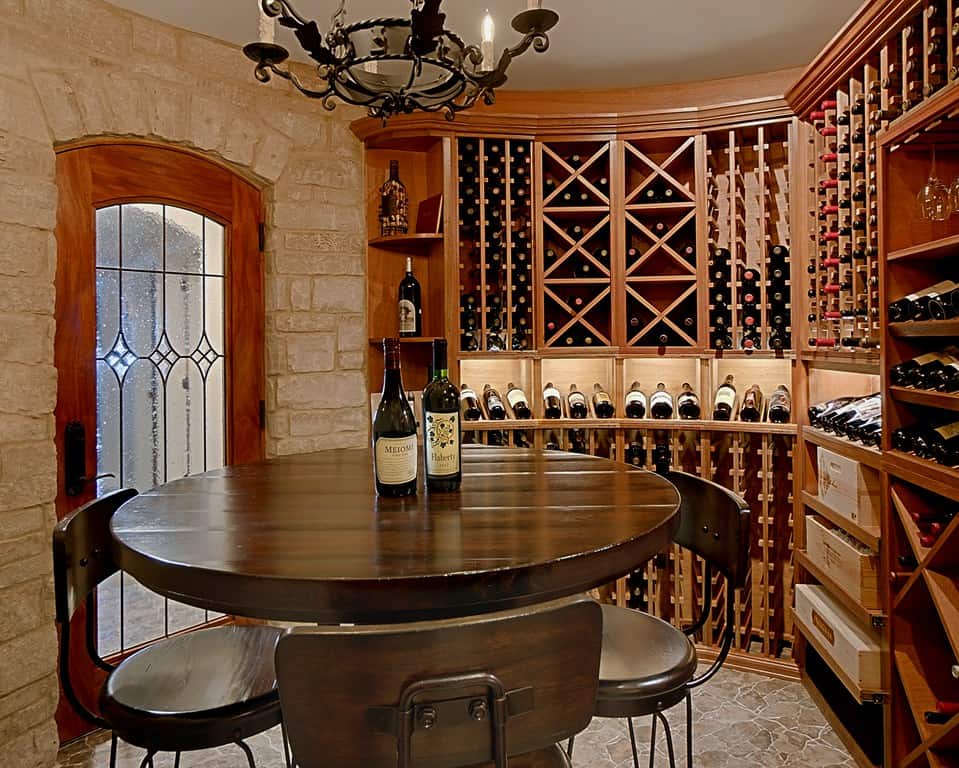
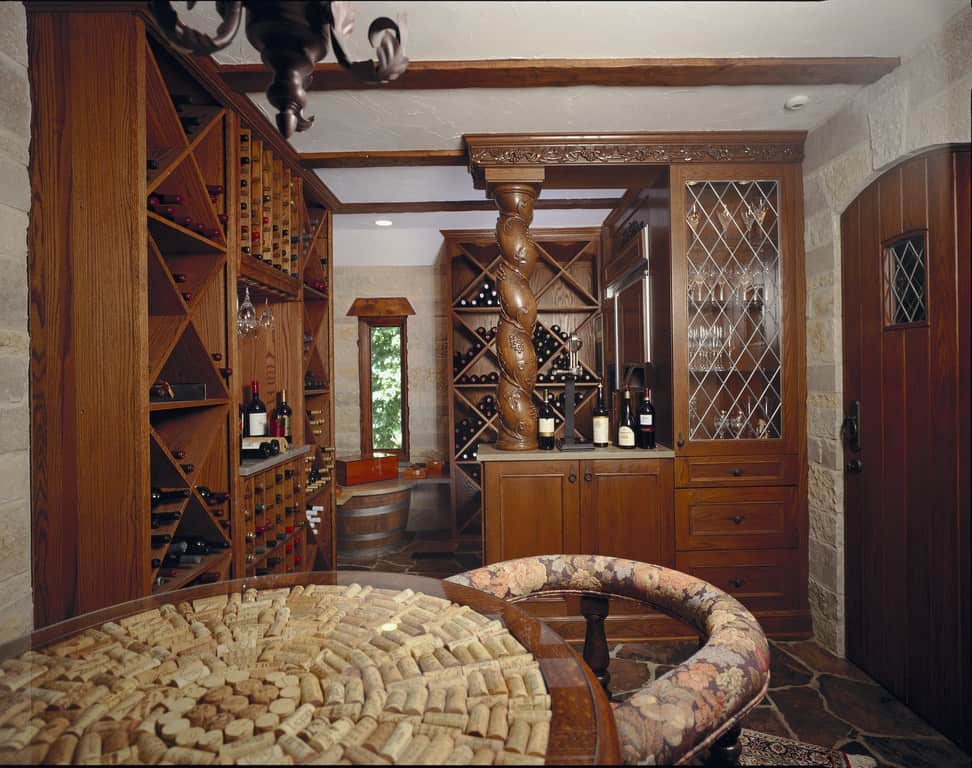
Wine Cellar Seating and Eating
While a tabletop inset can be a good option for homeowners who don’t plan to host many guests in their wine cellar, Orren Pickell has seen a trend toward adding dedicated seating and eating areas in wine cellars. Depending on the space available and the style of your wine cellar design, you may opt for a full-size table with seating for six or may select a small table that takes advantage of a built-in banquette and small chairs to provide a cozy place to enjoy a sip of vino.
Additionally, some homeowners opt to create a dedicated sitting room off of their wine cellar, providing a relaxing, comfortable place for hosting guests and trying a variety of different wines. Other homeowners choose to go with a simple tasting table with bar seating, allowing them to entertain several guests in a smaller space. Like with everything else related to wine, your unique tastes and your preferences will have a big impact on the type of seating you choose.
The Science of Storing Wine
Did you know that keeping your wine in a temperature- and humidity-controlled cellar actually helps them age better? It’s true–and a scientifically-proven fact. In a study performed by food scientist Dr. Fulvo Mattivi, wines age four times faster when stored at room temperature, between 68 and 80 degrees.
In the experiment, Mattavi stored 400 bottles of Tuscan wine in two different locations; 200 of them in a professional cellar and the remaining 200 in a dark, closet-like room. During the two years of the experiment, Mattavi compared both the wines’ taste and chemical structure. At the end of the study, Mattivi determined that the “closet wines” were less-than-ideal, having lost color and antioxidants four times more quickly than wines that were kept in a professional wine cellar. The “closet” wines were also compromised from a chemical perspective, with unwanted chemical reactions indicating their susceptibility to wine faults.
Suffice it to say that there are scientifically-sound best practices you should follow when storing your wine. Follow these tips to ensure you’re protecting your investment.
Watch your Temperature
It’s well known that heat and wine don’t mix; in fact, temperatures much above 80 degrees can actually “cook” your wine, leading to flat flavors and aromas. The goal is to keep your wine between 45-65 degrees, with 55 degrees often considered “ideal.”
It’s worth pointing out here that storing wine in your household refrigerator is fine if you’re going to use it within the next 6-8 weeks, but not a good long-term storage solution. Just like too much heat can negatively impact your wine, the lack of moisture within the closed refrigerator system can lead to cork damage from drying out, eventually letting air infiltrate the bottle and interacting with the wine.
Clearly, a temperature- and humidity-controlled wine cellar is your best bet. Anything you can do to keep your wines’ temperature steady, far away from extremely hot or cool temperatures, is a smart move.
Consider Your Lighting
Just like the sun’s UV rays can damage valuable artwork or furnishings, so too can it cause an issue for wine. While colored-glass bottles that wines are often stored in offer some level of UV protection, it’s important that you consider the best type of lighting for your wine room or cellar. Store your wine somewhere will sunlight won’t be an issue, and consider using incandescent or sodium vapor bulbs, as they emit the smallest amount of ultraviolet light. Steer clear of compact fluorescents. And think twice about LED lights, which also emit a small amount of UV light but often have a bluish tinge that doesn’t complement the desired look and feel of your wine storage.
Mind Your Moisture
Wines get ruined when air gets into the bottle, so keeping air out is key to successful wine storage. And one of the best ways to ensure that your wine remains air-free is to keep an eye on your humidity level to keep corks from drying out. Most vintners suggest keeping your wine storage humidity between 50 and 80 percent, with 70 percent being considered ideal. Your wine cellar should be constantly monitored against drier or damper conditions so that you can take action accordingly.
Keep it Horizontal
Wine bottles are typically stored on their sides to keep wine fresh; the thought is that with the wine constantly against the cork, the cork won’t be able to get dried out. However, there are some times when it is just fine to store your bottle vertically–for example, if its cork is made of glass or plastic, or if it has a screw cap. Keep in mind that storing these wines horizontally won’t hurt them; the takeaway here is that wines with alternative types of corks have some flexibility when it comes to storage.
Enjoy Your New Wine Cellar
Certainly, wine collecting can be a fun and rewarding hobby–but admittedly, it can also be a pricey one. If you’re considering adding a wine cellar to properly store your wine, remember a few things. Choose wine racking that complements your taste and style while fitting in with the rest of your home. Think about how you want to use the space in terms of entertaining, tasting and eating, as you’re working through the design process. And don’t neglect the science behind wine storage to keep your wines aging beautifully. By following these tips, you’ll be well on your way toward enjoying your new wine cellar today and tomorrow.






